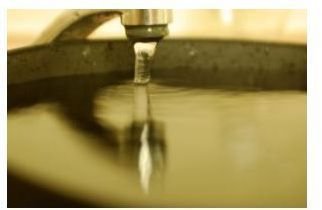Types of Conservation: A Brief Discussion of Various Types
Water Conservation
Water conservation is likely to take more of a forefront in the years ahead. According to the World Health Organization, over one billion people worldwide do not have access to safe drinking water. In the United States, western states may face their own water crisis due to rising populations and limited availability of treated water.
The availability of clean water is affected by pollution. American Rivers estimates that about 40 percent of U.S. rivers and streams are too contaminated for even recreational purposes. Considering that most Americans rely on surface water such as lakes and streams, the need to conserve water is more urgent.
Soil Conservation
The Dust Bowls of 1930 illustrate the dramatic impacts of poor soil management. With the combination of dry, windy conditions, the National Oceanic and Atmospheric Administration estimates that the impacts lasted up to eight years in some states, resulting in tons of topsoil loss.
The loss of topsoil is critical since most of the soil nutrients are found in this soil layer. Soil erosion introduces contaminants and sentiment into aquatic resources, increasing the environmental impact. Today, agricultural practices and land management focus soil conservation as a way to ensure soil nutritional quality and to prevent water pollution.
Wetland Conservation
Since European settlement, the United States has seen dramatic changes in its land cover. According to the U.S. Geological Survey, over half of the wetlands of the contiguous 48 states have been lost. Wetlands provide valuable flood protection as well as habitat for plants and wildlife. The U.S. Environmental Protection Agency estimates that one-third of the nation’s threatened and endangered species depends strictly on wetlands, making it one of the types of conservation necessary to prevent further environmental losses.
Conservation efforts may focus on restoration of wetland habitat through control over invasive species, which can out compete native species for resources. Other methods include prevention of runoff into wetlands through buffer strips planted adjacent to waterways.
Prairie Conservation
Prairies are one of the most endangered ecosystems in the world. American prairies became the country’s agricultural lands. The rich prairie soils provided the ideal environment for agricultural crops. Prairies have seen losses of over 90 percent in some states such as Iowa and Illinois. Like wetlands, prairies provide valuable habitat for plants and wildlife. They can also play a role in conserving other natural resources such as soil.
Energy Conservation
The rising cost of fossil fuels and growing environmental concerns have made energy conservation a top priority with governments and individuals. Energy conservation may be something as simple as turning off the lights when you leave a room. It can also involve more complex solutions such as alternative fuel power plants. The goal of energy conservation is to balance the need for energy with the environmental impact of fulfilling those needs.
The types of conservation show that there are ways to protect the environment through the wise use of resources. The conflict between conserving natural resources and development can be resolved with increased awareness of the environment impacts of resource use. In this way, the effects can be minimized.
Photo by Vince Petaccio, stock.xchng
References
American Rivers: Drip Accumulator: River Facts - americanrivers.org
U.S. Environmental Protection Agency: Fish and Wildlife Habitat– epa.gov
World Health Organization: Water and Sanitation - www.who.int
